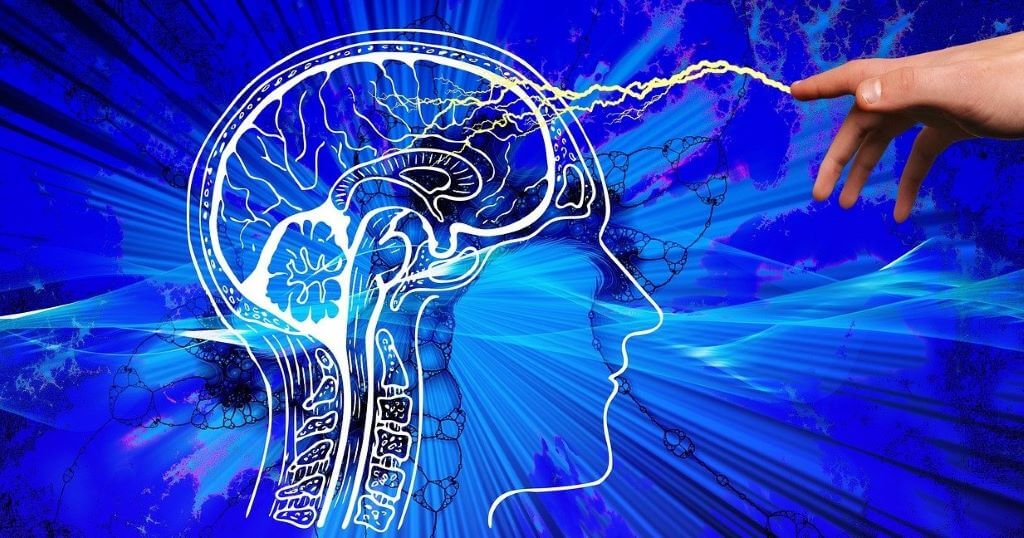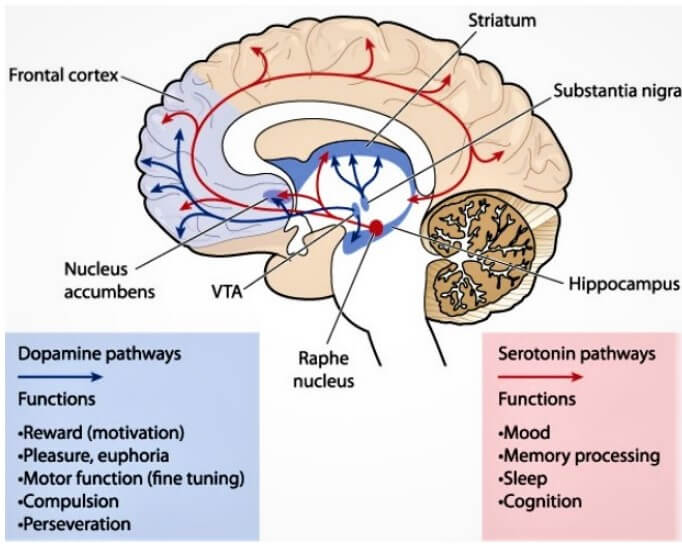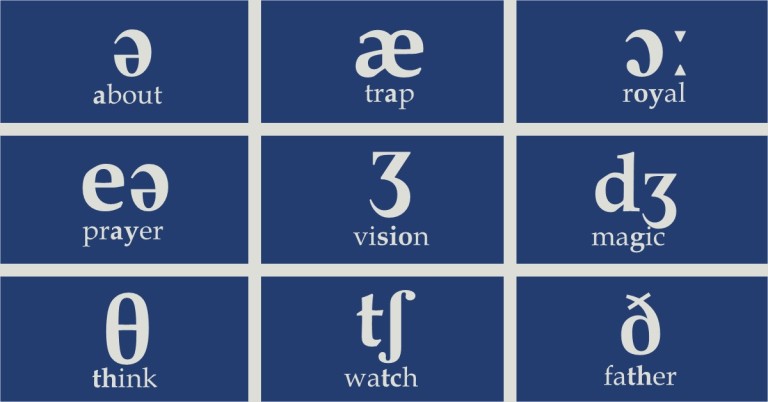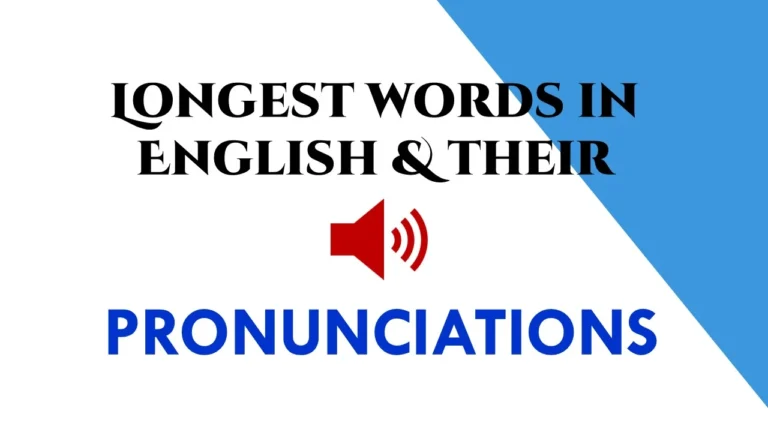Last updated on December 10th, 2023 at 12:09 pm
‘Porn addiction and brain’ is one of the hotcake topics among researchers as well as policymakers.
The harm pornography causes to our brains is not a myth any longer. the United States has shown that 79% of men and 76% of women consume pornography on a monthly basis. An estimated 50% of all Internet traffic is related to sex.
These percentages illustrate that pornography is no longer an issue of minority populations but a mass phenomenon that influences our society.
Interestingly, the phenomenon is not restricted to humans; a recent study found that male macaque monkeys gave up juice rewards to watch pictures of female monkeys’ bottoms.1
For the love of porn
And the mother bird chose to sit on more colourful than actual and artificial eggs abandoning their naturally laid eggs in Nobel laureate Nikolaas Tinbergen’s experiment on how addiction changes our brain to go after artificial and exaggerated suprastimuli.
After ‘The Pornography’s Socio-cultural Cost’, and Pornographic Romance: The Devastating Costs Of Pornography, this is my third of three segments of study about pornography and its social, physiological, psychological, neurological and effects on family life. This part of the study focuses on a brief theory of addiction, its various findings as a disease model, common addiction-related brain changes, the connection between pornography addiction and addiction related to substance abuse, and finally, like other addictions, the possible long-term harms and alteration of the brain.
Md. Razwan Hasan Khan and colleagues note “In Bangladesh, over 1,800 institutions provide education approximately to 800,000 undergraduate and postgraduate students annually. Privately owned institutions have a fundamental role in providing tertiary education in Bangladesh, and 38% of all university students are enrolled at a privately owned universities. Tertiary educational institutions are pioneers of adopting the latest ICT regardless of their geographic location.
Private and public universities in Bangladesh are at the forefront of the country providing free internet access to its students.
Furthermore, the development of infrastructures due to economic growth has increased the number of internet users across Bangladesh.
For example, internet subscriptions grew from 31,140,804 in 2012 to 62 million in 2016, and it is estimated that the majority of these internet subscribers are students.
As a result of their education, university students are more technologically inclined, particularly in developing countries. Similar to other nations, increased access to the internet also has increased access to online pornography in Bangladesh. For example, Google search statistics indicate that search terms “porn” was used 800,000 times in Bangladesh in 2016. Similarly, the search terms “sex” and “sex video” were used 2.2 million times during 2016.2
Addiction theory
Addiction, ‘Drug addiction, also referred to as substance dependence, is a serious and chronically relapsing disease wherein the afflicted individual has difficulty limiting drug intake, exhibits high motivation to take the drug, continues using the drug despite negative consequences, and experiences negative emotional and physiological states when the drug is withheld.3: Substances such as cocaine, opioids, methamphetamine, amphetamine, nicotine; and compulsive behaviour like gambling, shopping, sex and eating cause addiction and all activate the same reward pathway in the reward centre/system that mostly involves neurotransmitter Dopamine.
With the repeated likelihood of exposure to rewarding stimuli addiction is characterised as a brain disorder. We get burst of Dopamine coming from the buzz, pizza, methamphetamine, cocaine, cigarette, alcohol, compulsive exercise or Pornography, whatever we are addicted to.
Nora D. Volkow and colleagues write, “All drugs that can lead to addiction increase Dopamine in NAc (reward system).
The mesolimbic dopamine (Dopamine) pathway [DA cells in the ventral tegmental area (VTA) projecting into nucleus accumbens (NAc)] seems to be crucial for drug reward. Other Dopamine pathways [mesostriatal (Dopamine cells in substantia nigra {SN} projecting into dorsal striatum) and mesocortical (Dopamine cells in VTA projecting into frontal cortex)] are now also recognized to contribute to drug reward and addiction. “
“Dopamine is also involved in motivation (i.e., vigour, persistence, an effort toward the pursuit of reinforcing stimuli) through its regulation of several target regions, including NAc, ACC, OFC, DLPFC, amygdala, dorsal striatum, and ventral pallidum. The enhanced motivation to procure drugs is a hallmark of addiction. Drug-addicted individuals will go to extreme behaviours to obtain drugs, even at the expense of serious adverse consequences. Drug-seeking and drug-taking become their main motivational drives, which displace other activities.4
The American Society for Addiction Medicine (ASAM) as part of the long definition states, “Addiction affects neurotransmission and interactions within reward structures of the brain, including the nucleus accumbens (NAc), anterior cingulated cortex (ACC), basal forebrain, and amygdala, such that motivational hierarchies (Reward system) are altered and addictive behaviours, which may or may not include alcohol and other drug use, supplant healthy, self-care related behaviours. Addiction also affects neurotransmission and interactions between cortical and hippocampal circuits and brain reward structures, such that the memory of previous exposures to rewards (such as food, sex, alcohol, and other drugs) leads to a biological and behavioural response to external cues, in turn triggering craving and/or engagement in addictive behaviours”.
Researchers Bonnie Philip and colleagues see addiction as “the continued use of mood-altering addicting substances or behaviours and discussed the common pathways in the reward circuitry which affect learning, memory, motivation, control, and decision making, and a loss of control over a behaviour and associated negative consequences, which is common with using substances and other addictive behaviours. The behaviour is impulsive and obsessive, and often includes the feeling of craving. There is often interference with life (work, relationships, hobbies, etc.), repeated attempts to control or quit the behaviour, development of tolerance, and withdrawal symptoms.5
Besides addiction of drug abuse, the American Psychiatric Association (APA) recognises behaviour such as compulsive sexual behaviour, chronic gambling, internet addiction, pornography addiction, compulsive shopping, eating as behavioural addiction and states that “growing body of evidence supporting behavioural addictions, such as gambling. These behaviours activate the same brain reward system as those of drugs of abuse.
Recognizing addiction as a chronic, relapsing brain disorder characterized by compulsive drug seeking and use can impact society’s overall health and social policy strategies and help diminish the health and social costs associated with drug abuse and addiction”.
Gary Wilson describes addiction to have “inability to control use, use that interferes with one’s life are two cardinal signs of addiction”.6
It is now evident that various behaviours, which are repeatedly reinforcing the reward, motivation and memory circuitry are all part of the disease of addiction. Todd Love and others write, “Common mechanisms among addiction involving various psychoactive substances such as alcohol, opioids and cocaine; and pathological behaviours such as uncontrolled gambling, internet use, gaming, pornography and sexual acting out have also been delineated Naturally occurring behaviours such as eating and sex have evolved such that they activate the reward system due to the fact that they reinforce behaviours necessary for survival. The past decade has yielded multiple theories of addiction, all of which involve the reward system and related brain regions and substrates.7
The way addiction works
Pornographic material is now predominantly distributed using Internet-based technology.
The Internet is characterized by a “Triple-A- Engine” (Accessibility, Affordability, Anonymity; and this applies to much content online. Search engines make almost any kind of pornographic content easily accessible, often free, and acquirable without the shame, embarrassment, or prosecution that was once often the case.8 This reward circuitry of our brain compels us to do things that further our survival and passes on our genes.
At the top of the human/naturally list are sex, food, love, friendship and novelty; these are called ‘natural reinforces’ as opposes addictive chemical that hijacks the same brain circuit to create addiction.
Our brain’s reward circuitry gets the biggest blast of dopamine than the natural equivalent as we put value to the artificial supernormal/ supranormal stimuli.
Supernormal stimuli are the overstated forms of natural and normal stimuli that we deceitfully believe to be more valuable than natural ones.9 Like drugs and junk food, pornography too provides the same ‘supernormal stimuli’, which is the users spend hours surfing galleries of porn videos searching the right to finish, keep dopamine elevated for an abnormally long period’.
Moreover, Methamphetamine use employs the same mechanisms and neural substrates as does the natural reward of sexual stimulation.
In another study, cocaine addicts had nearly identical brain activation patterns when viewing pornography and cues related to their addiction, but brain activation patterns when viewing nature scenes were completely different.10

All drugs of abuse affect the mesolimbic dopamine (DA) pathway, which originates from the ventral tegmental area (VTA) and projects into the nucleus accumbens (NAcc). The mesolimbic dopamine pathway connects with three other key regions to form a collection of integrated circuits commonly called the reward system: The amygdala (positive and negative emotions, emotional memory), hippocampus (processing and retrieval of long-term memories), and the frontal cortex (coordinates and determines behaviour).
Taken together, the reward system and its connecting regions regulate, among other things, pleasure, reward, memory, attention, and motivation. Naturally occurring behaviours such as eating and sex, have evolved such that they activate the reward system due to the fact that they reinforce behaviours necessary for survival.7
The reward system is where our cravings, addictions, and wanting arises from.
Recent findings and clinical implications from studies in behavioural addictions such as internet addiction, gambling, food, internet sex addiction, and pornography addiction, indicate a strong neurobiological link between behavioural addictions and substance addictions (e.g. cocaine, heroin)”.5
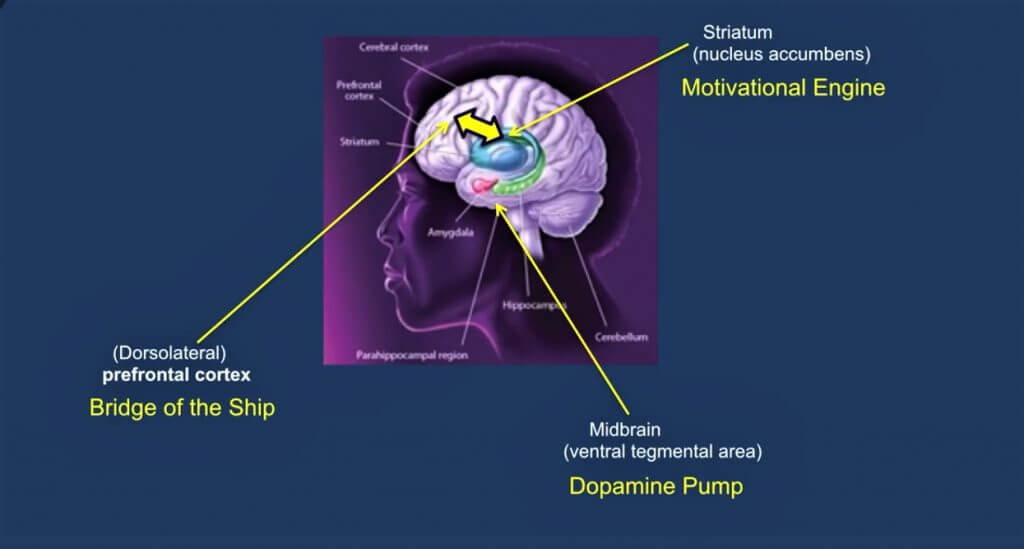
Researchers Todd Love, Christian Laier, Matthias Brand Linda Hatch and Raju Hajela in their review “Neuroscience of Internet Pornography Addiction: A Review and Update” suggest three stages of addiction.
They in their highly studied literature review “Binge/Intoxication” refer as stage one. They write that “different classes of drugs activate the reward system through different means, however, the universal result is a flood of dopamine in the NAcc (reward centre). This results in acute positive reinforcement of the behaviour that initiated the flood. In this impulsive stage, this positive reinforcement results in addictive related learning associations”.7
People repeat the behaviour that causes the flood of Dopamine. “The business of dopamine is all about “seeking”, and “searching” for pleasure, not the pleasure itself”.6
In stage two—“Withdrawal/Negative Affect”—the dopamine flood has run its course, and there is activation of the extended amygdala, an area associated with pain processing and fear conditioning. The resulting negative emotional state leads to activation of brain stress systems and dysregulation of anti-stress systems (activation of the brain stress system is theorised to be a primary element of negative emotional state produced through dependence that drives drug-seeking through negative reinforcement mechanism). This leads to a decreased sensitivity to rewards and an increase in the reward level begins to change and increase constantly, which is called tolerance.
This further progresses to negative reinforcement as the individual continues to engage in the addictive behaviours to avoid the negative affect associated with withdrawal (withdrawal symptoms of addicts: insomnia, anxiety, irritability, mood swings, headaches, restlessness, fatigue, poor concentration, depression, social paralysis and cravings).
This, in turn, encourages the reinstatement and/or reinforcement of the addictive behaviours.
Here, the impulsive behaviour shifts to compulsive behaviour referred to in the model as chronic taking/seeking. A second component of the reward system comes into play here; the mesocortical dopamine pathway. Like the mesolimbic dopamine pathway, the mesocortical dopamine starts in the VTA (ventral tegmental area), however, it terminates in the frontal cortex. Specific affected areas within the prefrontal cortex include the dorsolateral prefrontal cortex (DLPFC), responsible for key components of cognition and executive function, and the ventromedial prefrontal cortex (VMPFC) responsible for components of inhibition and emotional response. Taken together, the mesocortical dopamine pathway affects the cognitive component of reward processing.
The third stage of addiction they prescribe: “Preoccupation/Anticipation”—frequently referred to as craving. The neuroplastic impairments expand beyond the mesocortical dopamine pathway into other regions of the prefrontal cortex responsible for motivation, self-regulation/self-control, delayed reward discounting, and other cognitive and executive functions developed the Impaired Response Inhibition and Salience Attribution (I-RISA) model to emphasize the importance of this process. The I RISA model integrates the increased salience of learned drug-related cues (resulting from the aforementioned positive and negative reinforcement of the addictive behaviour) with newly developed deficiencies in top-down inhibitory control.
This leaves the individual vulnerable to the reinstatement of the behaviour, and two primary mechanisms have been identified; cue-induced reinstatement and stress-induced reinstatement.7
Another study says, “There is ample evidence that the mesolimbic system is activated in response to both substances of abuse and to naturally rewarding behaviours such as sexual behaviour. Male sexual behaviour, and in particular ejaculation, is highly rewarding and reinforcing in animals models. Drugs of abuse are also rewarding and reinforcing, and animals will learn to self-administer substances of abuse, including opiates, nicotine, alcohol, and psychostimulants. Although it is known that both drugs of abuse and sexual behaviour activate mesolimbic brain areas, it is currently unclear whether drugs of abuse influence the same neurons that mediate sexual behaviour”.11
A recent imaging study revealed that the involvement of the prefrontal cortex (DLPFC) in addiction is more central than previously thought, impacting the regulation of limbic reward regions and its involvement in higher-order executive function in areas such as self-control, salience attribution, and awareness. Similar processes are seen in process addictions such as addiction to food, sex, gambling, and the internet.5
The neurochemical dopamine compels an addict to repeat the activities that generate it, and as the addicts grow habituation and dopamine level drops an addict has to consume even stronger and bigger dose to obtain the same level of pleasure.
Porn addiction and brain: addiction is a disease
For the last five years, the word ‘porn’ has been the most searched keyword in the search engine. Along with 58% of college-going students who view porn at least once a weak, 79% of males and 76% of females in the USA between 18 to 30 years of age admitted viewing pornography once a month.
With this increased of the explicit materials comes the addiction. Addiction to pornography is developed by viewers with frequent and compulsive consumption over time. Because of social and individual approval, pornography has become a social-ill that take a toll on the familial, psychological, cognitive and financial state of viewers.
Scottish psychiatrist R.D. Laing who wrote broadly about mental illness said: “The range of what we think and do is limited by what we fail to notice. And because we fail to notice that we fail to notice, there is little we can do to change; until we notice how failing to notice shapes our thoughts and deeds.”
Addiction was considered as an ethical collapse or moral decline, in the not long past.
But addiction has been found to be a primary chronic disease of brain reward, motivation, and memory-related circuitry over the fifty years. The disease model of addiction has been manifested in biological, psychological, social and spiritual arenas. Because of several critical moments in the past few decades led to the general acceptance that drug and alcohol is, in fact, a disease.
American Medical Association acknowledged alcoholism and addiction as a disease through the relentless efforts of Dr Morton Bunky Jullinek in 1960.
In 1966 two federal appellate court divisions supported the disease concept of addiction. The then US President Johnson declared: “The alcoholic suffers from a disease which will yield eventually to scientific research and adequate treatment.”
By the 1990s it became increasingly clear through neuroscience research that addiction is a brain disease, as initially asserted by Dr. Alan Leschner, the Director of the National Institute of Drug Abuse, at the5 time. Various types of research to date strongly established the fact that drug addiction is a disease of the brain causing important derangement in many areas, including brain pathways affecting reward and cognitive functions.
American Society for Addiction Medicine defines addiction as: “Addiction is a primary, chronic disease of brain reward, motivation, memory and related circuitry. Dysfunction in these circuits leads to characteristic biological, psychological, social and spiritual manifestations. This is reflected in an individual pathologically pursuing reward and/or relief by substance use and other behaviours”.5,7
The definition of ASAM is significant in a dual sense: first, it recognises that addiction is, in fact, a disease which impacts brain mechanisms; second, it goes beyond the general boundary of addiction of substances to include gambling, sex, food, internet etc. as a behavioural addiction. “Alcohol and other drugs have long been recognised as addictive substances and addiction is now generally recognized as a chronic disease of the brain that involves relapse, progressive development, and the potential for fatality if not treated”.
The ASAM definition describes five characteristics that are known as the ABCDE of the addiction disease:5
A. Inability to consistently Abstain,
B. Impairment in Behavioural control,
C. Craving or increased hunger for drugs or rewarding experiences,
D. Diminished recognition of significant problems with one’s behaviours and interpersonal relationships and
E. A dysfunctional Emotional response.
Researchers found strong relation validity between Nondrug Addictions such as compulsive gambling, compulsive shopping, compulsive eating, compulsive sexual behaviour, and compulsive exercise; and drug addictions like cocaine, nicotine and methamphetamine. Brain imaging studies from drug-addicted individuals show physical changes in areas of the brain that are critical for judgement, decision-making, learning and memory and behaviour control.
In further support of the concept of addiction involving behaviours, ASAM uses the phrase “Addictive behaviours” 13 times in their Long Definition of Addiction, and expounds upon the phrase in Explanatory footnote 3: In this document, the term “addictive behaviours” refers to behaviours that are commonly rewarding and are a feature in many cases of addiction. Exposure to these behaviours, just as occurs with exposure to rewarding drugs, is facilitative of the addiction process rather than causative of addiction.
Behaviours, such as dishonesty, violation of one’s values or the values of others, criminal acts etc. can be a component of addiction; these are best viewed as complications that result from rather than contribute to addiction.
How addiction changes the brain
Internet pornography is men’s appreciated place for novel choices of partners where virtual copulation with fresh porn stars is unbound.
So, what makes someone keep going with it at the physical level? Dopamine.
Neuroplastic changes begin to occur, however, as the continued release of dopamine in the NAcc (commonly known as Reward Centre) leads to an increase in dynorphin levels. Dynorphin, in turn, decreases the dopaminergic function of the reward system, resulting in a decrease of the reward threshold and an increase in tolerance.
Neuroplasticity refers to the brain’s ability to reorganise the brain’s neural connection between brain cells over time”. Neuro means Neuron and plasticity means plastic, malleable, changeable, and adaptable. Because of the constant release of dopamine in the Reward Centre, ∆FosB (a protein) activates certain genes that begin to change the brain. As the level of ∆FosB rises it rewire the brain to want ‘it ‘.
It creates a circle of wanting.
It’s actually ∆FosB that creates a sensation by creating a stronger nerve connection.
The adolescent brain is far more plastic than the adult brain. The sensitised porn pathway is a preferred pathway because of its leads to a bigger reward than the real pathway. Once we create a new brain pathway brain peruse that pathway constantly. We create a new pathway as we start learning, doing something pleasurable.
Dopamine release in the brain’s reward centre helps us to pursue that new brain pathway we form.
“Dopamine surges for novelty. A new vehicle, a just-released film, the latest gadget…we are all hooked on dopamine. As with everything new the thrill fades away as dopamine plummets. So, as in the example above, the rat’s reward circuitry is squirting less and less dopamine with respect to the current female but produces a big dopamine surge for a new female.6
“The brain structure that regulates instinctive behaviours, including sex, called the hypothalamus, is plastic, as is the amygdala, the structure that processes emotion and anxiety. “
“While some parts of the brain, such as the cortex (PFC), may have more plastic potential because there are more neurons and connections to be altered, even noncortical areas display plasticity. It is a property of all brain tissue. Plasticity exists in the hippocampus (the area that turns our memories from short-term to long-term ones) as well as in areas that control our breathing, process primitive sensations, and process pain. You cannot have plasticity in isolation. It’s an absolute impossibility.
Experiments have shown that if one brain system changes, those systems connected to it change as well. The same “plastic rules” — use it or lose it, or neurons that fire together wire together — apply throughout. Different areas of the brain wouldn’t be able to function together if that weren’t the case.12
Sexual stimulation is unique among all other natural rewards.
Sex activates the same reward centre nerve cell as meth, and cocaine and heroin. Other natural rewards are food, salt etc. activate the different neuron cells. The addiction-related brain changes are Desensitisation, sensitisation, hypofrontality and dysfunctional stress circuits.
Desensitisation:
Reduced dopamine signalling and other changes leave the addict less sensitive to everyday pleasures and ‘hungry’ for dopamine-raising activities and substances. The addict may neglect other interests and activities that were once high priorities. Desensitisation is probably the first addiction-related brain change porn users notice. They need greater and greater stimulation to achieve the same buzz (‘tolerance’). They may spend more time online, prolonging sessions through edging, watching when not masturbating, or searching for the perfect video to end with.6
Sensitisation:
Or an unconscious super-memory of pleasure that, when activated, triggers powerful cravings. Rewired nerve connections cause the reward circuit to buzz in response to addiction-related cues or thoughts– the ‘fire together wire together’ principle. Cues, such as turning on the computer, seeing a pop-up, or being alone, trigger intense cravings for porn.
Hypofrontality:
Or reduced brain activity in the prefrontal regions, which weakens willpower in the face of strong subconscious cravings.
Alterations1 in the prefrontal regions’ grey matter109 and white matter correlate with reduced impulse control111 and the weakened ability to foresee consequences.6 Our findings indicated that the GM (Grey Matter) volume of the right caudate of the striatum is smaller with higher pornography use. Dysfunction of this circuitry has been related to inappropriate behavioural choices, such as drug-seeking, regardless of the potential negative outcome.6
(Unlike White Matter, Grey Matter in the brain is found in the Striatum area that is involved in muscle control, memory, speech and emotion.
A lower volume of grey matter may diminish short-term memory. Someone can be affected by bipolar disorder).
Dysfunctional stress circuits:
Which can make even minor stress lead to cravings and relapse because they activate powerful sensitised pathways.
To sum up, if these neuroplastic changes could speak, desensitisation would be moaning, ‘I can’t get no satisfaction’. At the same time, sensitisation would be poking you in the ribs saying, ‘hey, I’ve got just what you need’, which happens to be the very thing that caused the desensitisation. Hypofrontality would be shrugging and sighing, ‘bad idea, but I can’t stop you’. Dysfunctional stress circuits would be screaming, ‘I NEED something NOW to take the edge off!’
Christopher M. Olsen, PhD, Department of Molecular Physiology & Biophysics, Vanderbilt University School of Medicine, Nashville in his article Natural Rewards, Neuroplasticity, and Non-Drug Addictions says, “There are many parallels between non-drug addictions and drug addictions, including craving, impaired control over the behaviour, tolerance, withdrawal, and high rates of relapse. As I have reviewed, there is a glut of evidence that natural rewards are capable of inducing plasticity in addiction-related circuitry.
Like drug addiction, non-drug addictions manifest in symptoms including craving, impaired control over the behaviour, tolerance, withdrawal, and high rates of relapse. These alterations in behaviour suggest that plasticity may be occurring in brain regions associated with drug addiction.13
Olsen concluded that “Extensive data suggests that eating, shopping, gambling, playing video games, and spending time on the internet are behaviours that can develop into compulsive behaviours that are continued despite devastating consequences”.
Whether it is with non-drug or drug, substance abuse or behavioural addiction brain changes are inevitable as seen from the above experiments, studies, research and tests. Fake penises, synthetically enlarged breasts, bumps, artificial orgasms, fake ejaculations, exaggerated representation of orgasmic pleasure, Viagra-induced prolonged erection, sadomasochistic urge for sexual pleasure, the insincere and animalistic intention of copulation, untrue presentation of consummatory duration trick our brain into believing it true and valuable cause us quick and bigger orgasm than natural and primitive evolutionary ways.
This unsubstantiated misrepresentation of sex and sexuality has introduced a level of addition.
Addiction of sex of which pornography is the only means to satiate its thirst. In other words, pornography is pornography’s remedy.
Fake penises, synthetically enlarged breasts, bumps, artificial orgasm, fake ejaculations, exaggerated representation of orgasmic pleasure, Viagra-induced prolonged erection, sadomasochistic urge for sexual pleasure, the insincere and animalistic intention of copulation, untrue presentation of consummatory duration trick our brain into believing it true and valuable cause us quick and bigger orgasm than natural and primitive evolutionary ways.
Some gently tried to persuade their lovers to act like porn stars, and they were increasingly interested in “fucking” as opposed to “making love.” Their sexual fantasy lives were increasingly dominated by the scenarios that they had, so to speak, downloaded into their brains, and these new scripts were often more primitive and more violent than their previous sexual fantasies.12
Author Norman Doidge writes, “Soft-core pornography’s influence is now most profound because, now that it is no longer hidden, it influences young people with little sexual experience and especially plastic minds, in the process of forming their sexual tastes and desires. Yet the plastic influence of pornography on adults can also be profound, and those who use it have no sense of the extent to which their brains are reshaped by it.12
The connection between drugs and pornography
To relate pornography addiction with the novelty that it provides the Coolidge Effect is often cited by researchers.
It is an unparalleled example of how sexual novelty can drive behaviour.
What will happen if you drop a male rat into a cage with a female partner? At first, there would be a frenzy of copulation, and then the male rat partner gets bored and tired of lovemaking, progressively. Because the male partner has already had enough of it, and will not be able to make love to his female partner ever she wanted it.
But the ambience and mood of the male rat change as soon as the existing female partner is replaced with a fresh one into the cage.
His sexual desire is revived and he will gallantly struggle to fertilise her.
Pornography addiction is characterised as the following terms: “Compulsive sex”, cybersex, hypersexual, “hypersexual disorder”, “impulsive sex”, “out of control sex”, “problematic, “sex addict”.7
The addictiveness of Internet pornography is not a metaphor. All addicts show a loss of control of the activity, compulsively seek it out despite negative consequences, develop tolerance so that they need higher and higher levels of stimulation for satisfaction, and experience withdrawal if they can’t consummate the addictive act.12
“Pornography addiction is a recent diagnostic label,” said Avinash De Sousa and Pragya Lodha, “which is used to define patients with a propensity and tendency to view pornography images and videos frequently and regularly and also experiencing distress when not allowed to do so. This falls under the broader rubric of ‘sex addiction’ or as a subtype of ‘internet addiction behaviour”.14
It is regarded as compulsive behaviour (performing as act persistently and repetitively without its necessity leading to an actual reward or pleasure, while it could be an attempt to make obsessions go away).
Addiction of pornography is caused by compulsive sexual activities with repetitive use of pornographic (especially Internet pornography) materials despite social, sexual and financial consequences.
As pornography causes viewers sex addiction, sex addicts find pornography as a valid means to perversion. ‘Sex- addiction has not always been treated as a mental illness or disorder. Internet pornography addiction fits into the addiction framework and shares a similar basic mechanism with substance addiction. Researchers define ‘pornographic addiction’ as compulsive sexual behaviour, compulsive sex, hypersexual disorder and impulsive sex etc.
The recent revelation of the World Health Organisation (WHO) about ‘Sex-Addiction’ is something to reconsider our pornography viewing habit.
The British daily Daily Mail broke the news on July 12, 2018, on WHO’s declaration “Sex addiction IS a Mental-health disorder”. Sex addiction is also known as ‘Compulsive Sexual Behaviour’ disorder is defined by WHO as the “inability to control intense sexual urges leading people neglecting their health despite often driving no pleasure from being intimate. This can be sex with a partner, masturbation, pornography use, visiting prostitution or using chat lines”.
Childress and colleagues conducted a study in which they took fMRI scans of cocaine-addicted patients presented with rapid (33 milliseconds), preconscious visual cues (drug-related images). The same subjects were later shown preconscious sexually related visual cues (erotic images). They found activation of the same limbic system/reward circuitry in subjects shown sexual cues when shown drug-related cues. In their literature review of the neuroimaging studies of the human sexual response cycle, they concluded, “It is clear that the networks involved in human sexual behaviour are remarkably similar to the networks involved in processing other rewards”.15
Author, and psychiatrist Harry Fisch writes in his book The New Naked refers, “Sexual addiction, or “sexual dependency,” is a valid psychological disorder.
“It’s hard to treat because no single behaviour pattern defines it. A sex addict can suffer from compulsive masturbation, compulsive and chronic porn viewing, compulsive heterosexual and homosexual relationships or affairs, compulsive cybersex, prostitution, exhibitionism, and voyeurism—and even progress to such heinous crimes as child molesting, incest, or rape. Like any addiction, sexual dependency is a compulsive behaviour that dominates the addict’s life. The addict will continue to engage in addictive behaviour despite clear harm or distress to himself or those around him. Sexual addicts make sex a higher priority than everything else in their lives. They are so driven by the addiction that they can sacrifice their family, friends, work, and health to keep having sex.
They seek the orgasm as a compulsion, as an immediate gratification without the emotional connection.16
“Hard-core has evolved and is increasingly dominated by the sadomasochistic themes of forced sex, ejaculations on women’s faces, and angry anal sex, all involving scripts fusing sex with hatred and humiliation. Hard-core pornography now explores the world of perversion, while soft-core is now what hard-core was a few decades ago, explicit sexual intercourse between adults, now available on cable TV.12
Adolescent boys have shown that boys with daily consumption showed more interest in deviant and illegal types of pornography and more frequently reported the wish to actualize what was seen in real life. In partnerships, a decrease in sexual satisfaction and a tendency to adopt pornographic scripts have been associated with frequent Internet pornography consumption”.1
Compulsive sexual behaviour is an uncontainable addictive behaviour that causes a substantial impact on an individuals’ life owing to its negative consequences. Someone may apparently have his or her sexual desires met but anyone with Compulsive sexual behaviour finds the activity ongoing, leading him or her to engage in further unrewarding or risky sexual activity. The research found that Internet pornography users were 3.7 times more likely to pay for sexual intercourse than were persons with lower levels of pornography use.
The majority of men referred to clinicians for excessive use of sexual resources on the Internet are married and heterosexual.
Such behaviour is commonly cited as a factor in decisions to separate and divorce.
Comedian Russell Brand, actor Michael Douglas, Lindsay Lohan, David Duchovny and former American football player Terry Crews admit their struggle with pornography and sex addiction. “Pornography really messed up my life”, says Terry. “If days turn into night, and you are still watching, you’ve probably got a problem. And that was me”. Terry says it almost cost his relationship with his wife. Terry said, “You’ve probably heard saying that porn is great, but it does not compare to the real thing. When you are addicted to pornography, you’ll feel the opposite. Sex great but it doesn’t compare to pornography”.17
It is not only men who are addicted to sex and pornography. Erica Garza, a writer, describes in her book ‘Getting Off’ how she became addicted to pornography and promiscuous from 12 of her age.
Started with soft-core she engaged in violent and risky sex after college which frequently involved hooking up with strangers and having sex without condoms, and gradually her preference for hard-core heightened. “And afterwards I would feel broken, unlovable, worthless and used”, she says, “but I was using men for my needs, too”.
In the BBC documentary Hard-core Profits the interviewer asked ‘whether porn is addictive’ or pornography is one of the reasons behind the spread of HIV’ porn viewers who devastated their life because of pornography addiction and already contracted HIV in Ghana blamed pornography for their distressing situations. Like tobacco, it took a pretty long time for scientists, researchers and psychologists to recognise pornography as an addiction. Yet the connection between pornography and addiction is irrefutably established and granted.
Because of pornography addiction, pupils in India are failing in examinations and dropping out of school, a woman was forced to have anal sex by her husband which he saw in pornography, and teenagers in Papua New Guinea harmed themselves to make their penises bigger relationships are being strained because of compulsive sexual behaviour.
Pornography use readily becomes a tightly integrated component of that recurring compulsive, addictive pattern.
In this manner, pornography may provide self-soothing, autoerotic narcosis from real-life circumstances, an experience that mirrors a drug-like intoxication. In turn, long-term use effects of pornography use include increased loneliness and relational isolation and deterioration, potentially setting up a behavioural entrapment. Pornography use that is only temporary palliative while failing to address root causes of loneliness, and which in turn intensifies triggering conditions qualifies it as a maladaptive coping strategy and creates the possibility of destructive entrapment in a recursive cycle of pornography use and loneliness.18
Valerie Voon, professor of the Department of Psychiatry, Addenbrooke’s Hospital, University of Cambridge, Cambridge, United Kingdom, and her colleagues’ fMRI test on 19 heterosexual men with Sexual Compulsive Behaviour and 19 heterosexual volunteer without Sexual Compulsive Behaviour found that as:
“Drug-cue-reactivity and craving studies of nicotine, cocaine and alcohol implicate networks including the ventral striatum, dACC and amygdala, Sexual desire or wanting of the explicit sexual cues was linked to a dACC (dorsal anterior cingulate cortex), ventral striatal-amygdala functional network evident across both groups and more strongly activated and linked to sexual desire in the CSB (Sexual Compulsive Behaviour) group. In CSB (Sexual Compulsive Behaviour) subjects as compared to healthy volunteers, higher scores of sexual desire to explicit cues were associated with greater dACC activity and enhanced functional connectivity between the dACC, ventral striatum and amygdala suggesting a network involved in the processing of subjective wanting related to sexual cues”.19
Deep in a primitive part of the brain, surfing tube sites register as really valuable because of all the novelty. Excessive excitement strengthens the brain circuit that urges you to use pornography.6
Simone Kühn, PhD, Max Planck Institute for Human Development, Centre for Lifespan Psychology, Germany in an MRI study found a lower volume of Grey Matter in the right caudate of the striatum with higher consumption of pornography; and task-related activation of left putamen of striatum found to be lower, “cue reactivity in response to sexual stimuli and sexual arousal has been reported enhanced activity in the striatum compared with controlled stimuli; their fMRI studies confirmed that the putamen is activated during sexual arousal. The authors suggested this lower volume may reflect tolerance brought about by desensitization”.
They said, “This is in line with the hypothesis that intense exposure to pornographic stimuli results in a downregulation of the natural neural response to sexual stimuli”.1
Simone Kühn and Jürgen Gallinat also said, “The frequent brain activation caused by pornography exposure might lead to wearing and downregulation of the underlying brain structure, as well as function, and a higher need for external stimulation of the reward system and a tendency to search for novel and more extreme sexual material.
This hypothesised self-perpetuating process could be interpreted in light of proposed mechanisms in drug addiction where individuals with lower striatal dopamine receptor availability are assumed to medicate themselves with drugs”.
Shane, Voon and Potenza in their ‘Should Compulsive Sexual Behaviour be Considered an Addiction?’ the article says, “Compulsive Sexual Behaviour (CSB) is defined as ‘difficulties in controlling inappropriate or excessive sexual fantasies, urges/cravings, or behaviours that generate subjective distress or impairment in one’s daily functioning, because of its possible relationship to gambling and substance addiction.”
They continue, “Among CSB men most reported clinically distressing behaviours are compulsive masturbation, pornography consumption, casual sex with strangers, multiple sexual partners and paid sex20, while pornography consumption itself is responsible for casual sex, promiscuity, and Compulsive Sexual behaviour. Among women, high masturbation frequency, number of sexual partners and pornography use are associated with CSB (Compulsive Sexual behaviour).20
Whether a person experiences withdrawal or tolerance to a specific sexual behaviour is debated, although it has been suggested that dysphoric mood states may reflect withdrawal symptoms for an individual with CSB who have recently cut back or quit engagement in problematic sexual behaviours.
Shane, Voon and Potenza write that “The incentive motivation theory of addictions posits that addiction is related to the enhanced incentive salience to drug-associated stimuli resulting in greater attentional capture, approach behaviours, expectancy and pathological motivation (or ‘wanting’) for a drug. This theory also has been applied to CSB”.
CSB (Compulsive Sexual Behaviour) patients’ increased sexual desire correlated with increased activation in the ventral striatum, and cingulate and orbitofrontal cortices.
Data suggest that excessive engagement in the other behaviours (e.g. gaming, sex, compulsive shopping) may share clinical, genetic, neurological, and phenomenological parallels with substance addiction.20
“The big deal of Compulsive Sexual Behaviour is his tolerance. Someone with Compulsive Sexual Behaviour recognizes that he is like a drug addict who can no longer get high on the images that once turned him on. And the danger is that this tolerance will carry over into relationships, as it did in patients whom”, says Norman Doidge, “I was seeing, leading to sexual ability problems and new, at times unwelcome, tastes. When pornographers boast that they are pushing the envelope by introducing new, harder themes, what they don’t say is that they must, because their customers are building up a tolerance to the content.12
Evolution shaped this basic human drive to build families: sexual desire is one of our most powerful motivational forces and has been essential to the flourishing of the human race. Yet pornography transforms that drive into a force that primarily motivates the completely solitary and unproductive activity of masturbation.6
The possible damage to the brain
Pornography is more exciting than satisfying because we have two separate pleasure systems in our brains, one that has to do with exciting pleasure and one with satisfying pleasure.
The exciting system relates to the “appetitive” pleasure that we get imagining something we desire, such as sex or a good meal. Its neurochemistry is largely dopamine-related, and it raises our tension level. The second pleasure system has to do with the satisfaction, or consummatory pleasure, that attends actually having sex or having that meal, a calming, fulfilling pleasure. Its neurochemistry is based on the release of endorphins, which are related to opiates and give a peaceful, euphoric bliss.
Pornography, by offering an endless harem of sexual objects, hyperactivates the appetitive system.
Porn viewers develop new maps in their brains, based on the photos and videos they see. Because it is a use-it-or-lose-it brain, when we develop a map area, we long to keep it activated.
Just as our muscles become impatient for exercise if we’ve been sitting all day, so too do our senses hunger to be stimulated.12
Norman Doidge in his best-selling book Brain That Changes Itself’ writes, “Cocaine, almost all other illegal drugs, and even nondrug addictions such as running make the pleasure-giving neurotransmitter dopamine more active in the brain. Dopamine is called the reward transmitter, because when we accomplish something — run a race and win — our brain triggers its release. Though exhausted, we get a surge of energy, exciting pleasure, and confidence and even raise our hands and run a victory lap.”
He continues, “The losers, on the other hand, who get no such dopamine surge, immediately run out of energy, collapse at the finish line, and feel awful about themselves. By hijacking our dopamine system, addictive substances give us pleasure without our having to work for it.12 An important link with porn is that dopamine is also released in sexual excitement, increasing the sex drive in both sexes, facilitating orgasm, and activating the brain’s pleasure centres. Hence the addictive power of pornography.12
Norman Doidge says, “Addictions cause permanent changes in the brains of animals. A single dose of many addictive drugs will produce protein ΔFosB that accumulates in the neurons. Each time the drug is used, more ΔFosB accumulates, until it throws a genetic switch, affecting which genes are turned on or off. Flipping this switch causes changes that persist long after the drug is stopped, leading to irreversible damage to the brain’s dopamine system and rendering the animal far more prone to addiction. Nondrug addictions, such as running and sucrose drinking, also lead to the accumulation of ΔFosB and the same permanent changes in the dopamine system”.12
An addict experiences cravings because his plastic brain has become sensitized to the drug or the experience.
Sensitization is different from tolerance. As tolerance develops, the addict needs more and more of a substance or porn to get a pleasant effect; as sensitization develops, he needs less and less of the substance to crave it intensely. So sensitization leads to increased wanting, though not necessarily liking. It is the accumulation of ΔFosB, caused by exposure to an addictive substance or activity that leads to sensitization. 12
The plasticity of man’s sexual taste exaggerates a general truth: that the human libido is not a hardwired, invariable biological urge but can be curiously fickle, easily altered by our psychology and history of sexual encounters.
Brains are plastic.
The truth is we are always training our brains with or without our conscious participation.
It is clear from the countless responses that it is not uncommon for porn users to move from one genre to genre, after arriving at places they find personally disturbing and confusing. What must be behind this phenomenon?6
An outstanding book by Gary Wilson Your Brain on Porn mentions some online forums of former porn users who are currently in the reboot/recovery process after quitting using porn. The confessional accounts of thousands of former users the book describes had been addicted to pornography to various extents. “The largest and oldest English-language forum NoFap has 339,088, PornFree, 17,500, NoFap.org 21,000, YourBrainReblanced 11,600, and in China’s two largest such forums combined have 800,000 struggling members to testify their addiction of pornography.
The research done on the existing online forums researchers found phenomena, “such as impaired motivation, brain fog (inability to focus), loss of attraction to real partners, sexual dysfunction, depression, stress, social malfunction, poorer quality of life, and health and real-life intimacy problems”.6
Today’s pornography users are usually diagnosed with -prescribed medication for social anxiety, low self-esteem, concentration problems, lack of motivation depression, performance anxiety, and so forth.6
Confessions of porn addicts
Noted psychologist Philip Zimbardo noted that “excessive screen time interferes with the development of normal social skills, where real people become less rewarding and fake people become far more exciting”.6 A former user describes his social anxiety the following way:
Now that I look back at my life there has ALWAYS been a connection between porn consumption, masturbation and my social anxiety. Before porn, I had a lot of friends, a couple of girlfriends, and I felt like I was on the top of the world. There was nothing that could bring me down. I felt like I had my own way to react to everything that could happen. Then I got a new computer… After a year or two I found myself in REALLY deep social anxiety, combined with too much pot and nothing interesting to do with my life.
The porn addicts who are quitting it report that they have “better concentration”, “no more brain fog”, “clear thinking”, and “improved memory”.
Addiction neuroscientists report of creating addiction memory, concentration and impulse control problems along with some brain changes among users of pornography.
They fund ADHD symptoms correlated with internet addiction as well.
German researcher Simone Kühn’s finding about the lower volume of Grey Matter and its effects are conferment in a confessional statement of a former user: “When I was [using internet porn] I had brain fog or a constant hungover-like feeling, which made it hard for me to concentrate, talk to people or just do my everyday tasks. After 7-10 days without porn, this feeling went away. My mind became very clear, thoughts easily controllable, and I became much more relaxed in general”.6
Here is a confessional account of a former user of pornography:
“I always opened several windows in my browser, each one with many, many tabs. The main thing that arouses me is novelty. New faces, new bodies, new ‘choices’. I very rarely even watched a whole porn scene; and can’t remember when I saw an entire movie. Too boring. I always wanted NEW stuff “.
The evolutionary purpose of ‘dopamine’ is to motivate us to do what serves our genes to spread.
The bigger is the squirt of dopamine in something, the more it becomes craving to us. “Dopamine surges are the barometer by which we determine the value of our experience.
It tells us what to remember by helping re-wiring our brains. It helps our brain to record what turns us on. While this recording process takes place through a neural principle: ‘Nerve cells that fire together, wire together. Meaning the brain links the nerve cells of sexual excitement with nerve cells that help keep our memories which associated with excitement. “Sexual stimulation and orgasm are the biggest natural source of dopamine available to our reward circuitry.
Dopamine is odd. It shoots up when something is better than expected (positive prediction error: prediction and change our behaviour.
Specifically, if the reward is better than predicted which is what we all want)21 (violates expectations), but drops when expectations are not met (negative prediction error: If the reward is worse than predicted). With sex, it’s nearly impossible to match internet porn’s level of surprise, variety and novelty. Thus, once a young man thoroughly conditions himself to porn, sex may not meet his unconscious expectations. Unmet expectations produce a drop in dopamine – and erections. (A steady stream of dopamine surges is imperative for sustaining sexual arousal and erections.)6
Pornography is a unique Supernormal Stimuli that produces an enormous amount of dopamine.
Coupled with dopamine this supernormal stimuli is responsible for creating ‘sexual conditioning’ and ‘addiction-related brain change’ in the reward circuitry.
1. Sexual conditioning teaches users of pornography that, ‘So, this is how people have, and this is exactly how I should have sex, too; or this is what turns me on’.
2. The second sort is alarming one. It is deeply rooted in our brains as a form of addiction just like cocaine does it to our brain. Interestingly, scientists recently showed that methamphetamine and cocaine hijack the same reward-centre nerve cells that evolved for sexual conditioning.22
A second study by some of the same researchers found that sex with ejaculation shrinks (for a week at least) the cells that pump dopamine throughout the reward circuit. These same dopamine-producing nerve cells shrink with heroin addiction.23
Simply put, addictive drugs like methamphetamine and heroin are compelling because they hijack the precise mechanism that involves to make sex compelling. Just as drugs can activate the ‘sex’ nerve cells and triggers a buzz without actual sex, so can internet porn, pleasure like golf, sunset and laughter cannot.23 Any substance that causes dopamine rise, like alcohol or cocaine-can create addiction.
“Individuals with lower striatum volume may need more external stimulation to experience pleasure and might, therefore, experience pornography consumption as more rewarding”.1
Loss of grey matter in the reward circuitry (desensitisation) appears to play a role in porn-induced erectile dysfunction, but the fact that young guys often need longer to recover points to deep sexual conditioning during adolescence. Studies show less grey matter in the reward circuitry. In the German study, subjects who used the most porn had less grey matter and showed less arousal to sexy pictures.
There is a framework of addiction comprising 3Cs: 1) Craving, 2) loss of Control, 3) negative consequences. Bonnie K. Lee and Madison Moore elaborated the 3Cs in a very compelling way, based on the film Shame.24
Craving: Craving is manifested by an intense desire and urge for the behaviour to the extent that either the fantasy or attempts in engaging in the behaviour become a reigning preoccupation that dominates a person’s life.
Loss of Control: One sign of dependence on substances and behaviours is the development of tolerance. Tolerance means the need to engage with increased frequency or dosage and intensity in the use of a substance or behaviour to achieve the desired effect over time.
Negative consequences: Continuation of a behaviour despite its adverse consequences is another sign of an addictive disorder. Negative consequences associated with addiction entail occupational, financial, psychological, relational, moral, physical and legal ramifications. “Similar to substance use, compulsive behaviours leading to users’ preoccupation, loss of control, and continuation of use despite adverse consequences share the core features that characterize what is commonly called addiction”.24
Pornography use is indeed an addiction, either it is a cause of sex addiction or it causes sex addiction such as compulsive sexual behaviour, problematic sex, hypersexuality, deviant sex, and insatiable sexual desire is still to discover.
But it is convincingly clear that pornography is a medium of addiction that impacts the same rewarding mechanism in the brain like any addictive drug or psych stimulant like methamphetamine or Yaba does.
Hello there,
If you’ve enjoyed reading my articles and found value in my platform, I kindly ask for your support. By buying me a coffee, you’ll be directly contributing to my mission of keeping Probinism ad-free. Your support means the world to me. Every coffee you buy brings me one step closer to achieving that goal.
I am immensely grateful for your support, and we look forward to bringing you even more amazing articles in the future. Thank you for being a part of the Probinism community!
Here’s how you can show your support:
👉 Click the link below to buy us a coffee ☕![]()
Warm regards,
Romzanul Islam
References:
- Brain Structure and Functional Connectivity Associated With Pornography Consumption The Brain on Porn. Simone Kühn, PhD and Jürgen Gallinat, PhD. 2014, JAMA Psychiatry, p. doi:10.1001/jamapsychiatry.2014.93. ↩ ↩ ↩ ↩
- Does the addiction in online pornography affect the behavioral pattern of undergrad private university students in Bangladesh? Md. Razwan Hasan Khan Chowdhury, Mohammad Rocky Khan Chowdhury, Russell Kabir, Nirmala K P Perera, Manzur Kader. ISSN: 1658-3639, Lund, Sweden : PUBLISHER: Qassim University, 2016. ↩
- The neurocircuitry of illicit psychostimulant addiction: acute and chronic effects in humans. Sara B Taylor, Candace R Lewis, and M Foster Olive. 2013. doi: 10.2147/SAR.S39684. ↩ ↩
- Addiction: Beyond dopamine reward circuitry. Nora D. Volkowa, b, Gene-Jack Wangc, Joanna S. Fowlerc, Dardo Tomasib, and Frank Telangb. NY : Medical Department, Brookhaven National Laboratory, 2010. ↩
- Sex addiction as a disease: Evidence for Assessment, diagnostic, and Response to Critics. JR., Raju Hajela & Donald L. Hilton. The Journal of Treatment & Prevention, Vols. Volume 22, 2015 – Issue 2: ↩ ↩ ↩ ↩ ↩
- WILSON, GARY. YOUR BRAIN ON PORN INTERNET PORNOGRAPHY AND THE EMERGING SCIENCE OF ADDICTION. s.l. : Commonwealth Publishing, 2014. ↩ ↩ ↩ ↩ ↩ ↩ ↩ ↩ ↩ ↩ ↩ ↩ ↩ ↩
- Neuroscience of Internet Pornography Addiction: A Review and Update. Todd Love, Christian Laier, Matthias Brand, Linda Hatch, and Raju Hajela. ISSN 2076-328X, 2015, Vols. 388-433. ↩ ↩ ↩ ↩ ↩ ↩
- Dirty Habits? Online Pornography Use, Personality, Obsessionality, and Compulsivity. PARMAR, VINCENT EGAN and REENA. ISSN: 0092-623X print, 2013, Journal of Sex & Marital Therapy. ↩
- Monkeys pay per view: Adaptive Valuation of Social Images By Rhesus. Robert O. Deaner, Amit V. Khera, and Michael L. Platt. s.l. : PubMed, 03 29, 2005. ↩
- Is Internet Pornography Causing Sexual Dysfunctions? A Review with Clinical Report. Brian Y. Park, Gary Wilson , Jonathan Berger , Matthew Christman , Bryn Reina , Frank Bishop , Warren P. Klam and Andrew P. Doan. 2016, Vol. 17. ↩
- Methamphetamine acts on subpopulations of neurons regulating sexual behaviour in male rats. Karla S. Frohmader, B.Sc., Joost Wiskerke, M.Sc., Roy A. Wise, Ph.D., Michael N. Lehman, Ph.D., and Lique M. Coolen, Ph.D. 3, 201 : s.n., Vol. 166. ↩
- The Brain That Changes Itself . NORMAN DOIDGE, M.D. ↩ ↩ ↩ ↩ ↩ ↩ ↩ ↩ ↩ ↩ ↩
- Natural Rewards, Neuroplasticity, and Non-Drug Addictions:. Christopher M. Olsen, Ph.D. 12 2011. ↩
- Neurobiology of Pornography Addiction – A clinical review. Avinash De Sousa, Pragya Lodha. ↩
- Prelude to Passion: Limbic Activation by ‘‘Unseen’’ Drug and Sexual Cues. Anna Rose Childress, Ronald N. Ehrman, Ze Wang, Yin Li, Nathan Sciortino, Jonathan Hakun, William Jens, Jesse Suh, John Listerud, Kathleen Marquez , Teresa Franklin, Daniel Langleben, John Detre, Charles P. O’Brien. 2008. ↩
- The New Naked: the ultimate sex education for grown-ups. Harry Fisch, MD and H Karen Moline. ↩
- Is ‘porn addiction’ a real thing? BBC. 2016. ↩
- Pornography Use And Loneliness: A Bidirectional Recursive Model And Pilot Investigation. Mark H. Butler, Samuel A. Pareya, Thomas W. Draper, Nathan D. Leonardth & Kevin B. Skinner. ↩
- Neural Correlates of Sexual Cue Reactivity in Individuals with and without Compulsive Sexual Behaviours. Valerie Voon, Thomas B. Mole, Paula Banca, Laura Porter, Laurel Morris, Simon Mitchell, Tatyana R. Lapa, Judy Karr, Neil A. Harrison, Marc N. Potenza, Michael Irvine. ↩
- Should Compulsive Sexual Behaviour be considered an Addiction? Shane W. Kraus, PhD, Valerie Voon, M.D., PhD,and Marc N.Potenza, M.D. 2016. ↩ ↩ ↩
- Dopamine reward prediction error coding. Wolfram Schultz, MD, FRS. Dialogues Clin Neurosci. 2016;18:23-32. ↩ ↩
- Methamphetamine acts on subpopulations of neurons regulating sexual behaviour in male rats . Karla S. Frohmader et al. ↩
- Endogenous Opioid-Induced Neuroplasticity of Dopaminergic Neurons in the Ventral Tegmental Area Influences Natural and Opiate Reward. Kyle K. Pitchers, Caroline M. Coppens, Lauren N. Beloate, Jonathan Fuller, Sandy Van, Karla S. Frohmader, Steven R. Laviolette, Michael N. Lehman, and Lique M. Coolen. 34(26):8825–8836 • 882, s.l. : The Journal of Neuroscience, 2015. ↩ ↩
- Shame and Sex Addiction: Through A Cinematic Lens. Moore, Bonnie K Lee and Madison. 2014. ↩ ↩

